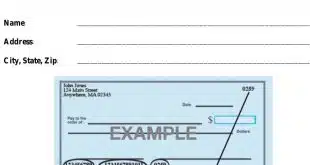Although the conversion of paper checks into electronic transactions at billers' lockboxes and other central locations is growing at a torrid rate, it will level off by 2008, in part because check volumes are dropping faster than expected, according to a new research report. The 3-year-old conversion process, in which billers are able to change checks written by consumers into electronic checks settled through the automated clearing house, is called accounts-receivable conversion (ARC), and it has grown so fast it accounted for 1.27 billion transactions last year, or 11% of all ACH activity and 13% of all checks sent by consumers to billers, estimates the report. The cost efficiencies of ARC are such that that volume will continue to climb, to just over 4 billion in 2007, when it will account for fully 60% of all consumer checks in lockboxes, predicts the report, produced by the Aite Group, a New York-based payments-research firm. But overall check volume will continue to plunge in the meantime, as consumers increasingly adopt electronic payments. “Ultimately, cards and online bill payment methods will force the checks out,” says the report, authored by Gwenn Bezard, research director at Aite. That may channel transactions to other ACH applications. But it will also mean ARC will cool off, with volume barely rising in 2008 over 2007, predicts the report, entitled “ARC: Competing in a Commoditized Market.” By that time, says the report, ARC will account for better than three-quarters of all checks consumers send to billers, but overall bill-payment check volume will have plummeted from 9.96 billion in 2004 to 5.3 billion in 2008. Other factors will contribute to this cooling off of growth in ARC, Bezard adds, including the fact that checks drawn on business accounts, as well as money orders and so-called convenience checks (used for balance transfers on credit cards), can't be converted to ACH debits under rules set by NACHA, the organization that writes the playbook for ACH activity. Bezard estimates this rules out anywhere from 15% o 20% of all lockbox volume. Another factor is that processors find it hard to make money on ARC for small billers. At 50,000 items per month or fewer, he argues, “billers must pay more for ACH than for paper clearing.” That means most small billers, which he estimates account for 20% of payments, may never adopt ARC. Although Bezard last year predicted the rise of check image exchanges would also cut into the growth of ARC (Digital Transactions News, Nov. 10, 2004), he now says the swapping of digital check images instead of paper will have little effect in the next several years, mainly because image exchanges have taken longer than expected to get organized, widening the price advantage of ARC over checks as check volumes drop. “The continued rise in unit clearing costs for checks has pushed back the prospect of rapid adoption of image exchange at the lockbox,” he says in the report. “As ACH unit clearing costs continue to fall, more volume is attracted by the ACH, further undermining the prospect of image exchange at the lockbox.”
Check Also
Fiserv’s Latest Acquisition and other Digital Transactions News briefs from 3/19/25
Fiserv Inc. has acquired CCV, a payments provider operating in Germany, Belgium, and the Netherlands, in …




